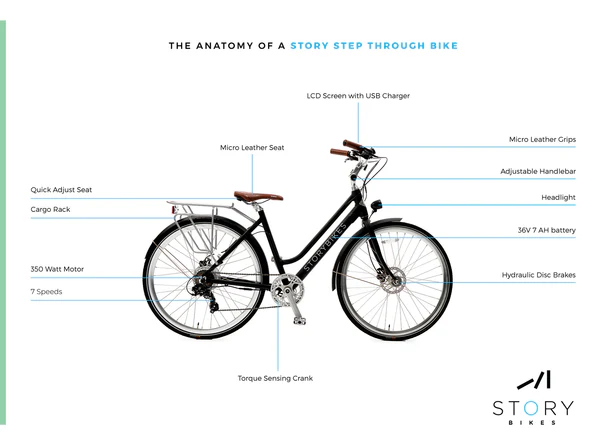
Over the past few years, electric bikes, commonly known as e-bikes, have surged in popularity as a convenient and eco-friendly mode of transportation. These bikes combine the joy of traditional cycling with the added convenience of an electric motor. When choosing an e-bike, one crucial factor to consider is the wattage of its motor. This blog aims to explore what watts mean for electric bike motors, the different wattage options available, their respective advantages and disadvantages, and the regulatory aspects surrounding them.
Understanding Watts in Electric Bike Motors
Watts measure the power output of an electric motor, indicating how much energy it can deliver to assist the rider. Essentially, a higher wattage motor provides more power, enabling quicker acceleration and better hill-climbing capabilities. However, more powerful motors also tend to drain the battery faster and may face legal restrictions in certain regions.
Exploring Common Wattage Options for E-Bike Motors
E-bike motors come in various wattage configurations, such as 250 watts, 350 watts, 500 watts, and 750 watts. Each has its own set of pros and cons:
- 250-Watt Motors: These are standard on many entry-level e-bikes. They strike a balance between affordability and functionality, offering sufficient power for casual rides on flat terrain. However, they might lack the grunt for steep inclines or heavy loads.
- 350-Watt Motors: A sweet spot for those seeking a mix of performance and efficiency, these motors offer ample power for everyday use without excessive battery drain. They're frequently the upper limit for legal classification as bicycles in numerous countries.
- 500-Watt Motors: Ideal for tackling tougher terrains, these motors provide robust performance but consume more energy. Depending on local laws, they might require additional licensing or permits.
- 750-Watt Motors: At the top end of the spectrum, these motors deliver impressive speed and acceleration. Yet, they come with high energy demands and strict regulatory hurdles in most places.
Legal Considerations for E-Bike Motors
The rules governing e-bike wattages differ across countries and regions. While some jurisdictions classify e-bikes similarly to regular bicycles, others treat them akin to motorized vehicles, imposing stricter guidelines. Typically, 250-watt and 350-watt motors are the most widely recognized and accepted standards, whereas higher wattage units might encounter limitations or necessitate specific approvals.
For individuals prioritizing battery efficiency, opting for a 350-watt motor is a smart decision. Story Bikes stand out as excellent choices for stylish yet budget-friendly 350-watt electric bicycles.
A 350-watt motor offers a balanced approach to power and efficiency. It delivers adequate propulsion for typical riding scenarios without excessively depleting the battery. Consequently, users can enjoy extended travel distances before needing to recharge, maximizing their ride time. Moreover, since 350-watt motors often comply with legal limits in various locations, they represent a dependable option.
Another advantage of 350-watt motors lies in their ability to keep riders engaged physically while still providing electric assistance. With this setup, cyclists can pedal actively and reap health benefits, yet receive support from the motor during challenging sections. This combination appeals especially to commuters or fitness enthusiasts who wish to maintain an active lifestyle alongside modern conveniences.
Embossed Frp Sheet,Pebbled Frp Sheet,Fiberglass Sheet,Matte Frp Sheet
YANGZHOU MAXTONE COMPOSITE CO.,LTD. , https://www.maxtonetruckbody.com
